Welcome to our parish community!
We’re very glad you’ve decided to join us.
If you haven’t already, say hi to our parish priest, Father Arsène Dutunge. He would love to meet you.
Doors are usually open early before Mass starts, and coffee is also available after Mass on Sundays. Feel free to come up to any of our volunteers and introduce yourself. We have various ministries available in the parish so please don’t hesitate to ask any of our volunteers about ways to get connected.
Here at St. Anthony’s Parish we want to love God, to love one another, and to make the name of Jesus known.
by Lyndon Little
 St. Anthony of Padua — a Franciscan friar and the patron saint after whom our parish is named — is a man worthy of serving as an inspiration to all of us for his selfless devotion to our Lord in his preaching of the gospel and service to the poor.
St. Anthony of Padua — a Franciscan friar and the patron saint after whom our parish is named — is a man worthy of serving as an inspiration to all of us for his selfless devotion to our Lord in his preaching of the gospel and service to the poor.
There is actually another famous St. Anthony celebrated by the Catholic Church — St. Anthony of Egypt, who lived about nine centuries before the one who has lent his name to our parish. When St. Anthony’s, West Vancouver, was first established as a mission in 1921 a wealthy patron from Eastern Canada requested our church be named after his favourite saint.
St. Anthony of Padua is known as one of the most celebrated followers of St. Francis of Assisi, founder of the Order of St. Francis.
Our St. Anthony was born in 1195 in Lisbon into a rich and powerful Portuguese family. His life, which lasted only 36 years, can be divided into three distinct phases. He lived 15 years with his parents, 10 years as a Canon Regular of St. Augustine — primarily at Coimbra, Portugal — and 11 as a member of the Order of St. Francis.
During his time in Coimbra, Anthony was so impressed by some of the Franciscan monks who visited there before being martyred in Morocco that soon after in 1220 he asked to be allowed to join the Friars Order, taking the name by which we know him today (he had been baptized at birth as Ferdinand).
After joining the Franciscan Order, Anthony sailed for Morocco in hopes of continuing his mission with his new order. Unfortunately, he was soon struck by illness and was forced to return to Portugal. During the intended voyage home, his ship was driven by a storm onto the coast of Sicily where he remained for some time until he recovered his health.
St. Anthony eventually made his way to Assisi in Italy where his knowledge and contemplative nature attracted the attention of St. Francis himself, who chose him to teach theology to the friars in Bologna and Padua. Whether St. Anthony and St. Francis actually met face-to-face is a matter of debate among religious scholars. However, what is known is that St. Anthony was sent to France a few years later where he began preaching and teaching. It was during this period of his life that his reputation as a charismatic orator began to spread. His fame was such, it is said he drew crowds so large he often spoke in market places rather than in churches.
He was especially noted for attacking the vices of luxury, avarice and heresy. It was his particular condemnation of the last vice that earned him the reputation as “The Hammer of the Heretics.”
Sadly, St. Anthony’s time on earth wasn’t lengthy. After the death of St. Francis in October of 1226, he returned to Italy from France where he was elected provincial minister of Emillia. At the end of Lent, 1231, St. Anthony was himself struck by a severe illness and died on June 13.
Best known for his CPP skills — hearing confession, preaching and prayer, his sole professed aim was to meet God as soon as possible, beginning with his wish to be martyred in Morocco. It turns out he had to wait longer than he had hoped because God had other plans for him. He at last achieved his goal when he passed away in Arcella —a short distance from his beloved Padua. One of the friars who was travelling with him asked Anthony what he was staring at so intently, he answered: “I see my Lord.” He died in peace a short time after that.
The measure of St. Anthony’s standing in the church is demonstrated in his canonization by Pope Gregory IX on May 30, 1232, less than a year after his death. The spreading of his fame was aided through the evangelical efforts of the Portuguese, who took news of his good works with them to the New World, most particularly to Brazil. He was also named a Doctor of the Church by Pius XII in 1946.
Since the 17th century, St. Anthony’s name has been frequently invoked as the finder of lost articles. As well, his devotion to the poor was honoured by the 19th century institution of St. Anthony’s Bread. This charity — devoted to the relief of the starving and needy — still flourishes, especially in Third World countries. In Sicily, huge loaves in the shape of a crown are baked on his Feast Day, June 13.
The life of St. Anthony can perhaps be best summed up by a paragraph written by Leonard Foley O.F.M. in his excellent “A Short Life of St. Anthony of Padua.”
Foley wrote:
“Anthony was a simple and humble friar who preached the Good News lovingly and with fearless courage. The youth whom his fellow friars thought was uneducated became one of the great preachers and theologians of his day. He was a man of great penance and apostolic zeal. But he was primarily a saint of the people.”
By Patrick Raynard
 The Roman Catholic presence on the North Shore began almost 160 years ago when the Oblate Missionaries and Chief Snatt of the Squamish First Nation built a mission chapel in what is now North Vancouver. The 1866 building was renovated in 1909 and renamed St. Paul’s in honour of Vancouver Bishop Paul Durieu.
The Roman Catholic presence on the North Shore began almost 160 years ago when the Oblate Missionaries and Chief Snatt of the Squamish First Nation built a mission chapel in what is now North Vancouver. The 1866 building was renovated in 1909 and renamed St. Paul’s in honour of Vancouver Bishop Paul Durieu.
West Vancouver was born from a cluster of summer cabins that were built at Ambleside Beach in the 1880s, following the building of the first lighthouse at Point Atkinson in 1875. The population grew after a ferry connected Vancouver to the foot of Lonsdale in 1890 and Ambleside in 1910. West Vancouver became a municipality in 1912, with a population of 1,500, but Catholic residents had to travel to North Vancouver until one of the Oblates started celebrating Mass in the Ambleside cabins in 1915. Around this time building lots in West Vancouver sold for $450.
As West Vancouver’s Catholics grew in number, their need for larger Mass locations took them from Ambleside Hall to a Dundarave building later known as Sager’s Maple Shop and from there to the Clachan Hotel at the foot of 25th Street (which became Peppi’s Restaurant and is now the Beach House.) Catholic children took the Pacific Great Eastern (PGE) train to North Vancouver and walked up to St. Edmund’s parish where the Sisters of the Child Jesus taught them Catechism and prepared them for the Sacraments.
In 1920, West Vancouver’s 20 Catholic families petitioned Bishop Timothy Casey for a church of their own. He responded by sending an Oblate from St. Paul’s, Father W. Brabender, to establish a mission parish and to start plans for a building at the confluence of Inglewood and Haywood Avenues (where the present church stands); the far-sighted Archdiocese had purchased a property there in 1912. An anonymous wealthy donor from Eastern Canada asked that the parish be named after St. Anthony of Padua.
Father Brabender celebrated the first Mass in the incomplete new church in the early 1920s. The building held 150 people; the Squamish First Nation donated most of the furniture, the sacred vessels, and the bell. In 1924 Bishop Timothy Casey elevated the mission to the status of a full parish, thanked the Oblates for their services, and appointed Father Alex McDonald as the first official pastor. There being no rectory, Father McDonald roomed in the Clachan Hotel.
The next pastor was Father John Kelley, on loan from a diocese in New Mexico, who operated from his sister’s home on Haywood Avenue. His greatest challenge was heating the entire church from one wood-burning stove; he never succeeded and delivered his winter homilies wrapped in a woollen blanket. Because of the Archdiocese’s shortage of priests during the Depression, the Irish-born Father Daniel Carey was brought in from missionary work in China in 1930 to minister to St. Anthony’s Parish. Father Carey motivated the 18 members of the Ladies Altar Society to form themselves into the new parish chapter of the Catholic Women’s League.
During the Depression and Second World War, four pastors served the growing parish. Father James Flanagan had the basement finished in 1933; Father W. J. Millay of the Order of the Premonstratensians (known as the Norbertines) bought the next-door house which still serves as the Rectory; and Father A. B. Van de Grevel, a committed educator and also a Norbertine, had the Sisters of the Child Jesus driven over from North Vancouver to teach Catechism between Sunday Masses. He also started work towards establishing a Catholic elementary school. Father N.J. Windt (St. Anthony’s last Norbertine) further sharpened the parish’s focus on education.
The arrival of Monsignor Leo Hobson in 1947 launched the post-war era at St. Anthony’s Parish. Canada’s unprecedented boom was reflected in West Vancouver’s burgeoning population of Catholics who were anxious to see their children educated in the faith. In 1952 Monsignor Hobson hired contractor Gerald Hanssen, Vini Fitzgerald’s father, to oversee the dismantling of the old church and the building of the new one. During the construction Monsignor Hobson held Masses in the Optimist Hall beside Sager’s Maple Shop.
Monsignor Hobson’s considerable work toward the building of a Catholic elementary school was taken up by Father Dermot McInerney in 1956. The original St. Anthony’s School, in its present location on Keith Road, was contracted and paid for entirely by St. Anthony’s parishioners. SAS began classes in September 1958 for 110 pupils from Grades 1 to 5. Acting as principal, Father McInerny brought the Sisters of St. Joseph of Peterborough from Ontario in 1959 to help the lay teachers and to administer the school. In 1961 the facility was expanded and a convent for the Sisters was built on the property.
In the late 1950s Father McInerny and parishioners also helped establish St. Thomas Aquinas Regional Secondary School, located beside the Sisters of the Child Jesus convent in North Vancouver.
When Father John Stewart arrived at St. Anthony’s Parish in 1963, there were more than 2,000 parishioners plus 250 students at St. Anthony’s School, which now included Grade 8. Masses had to be held at the school, the church and a rented hall in Horseshoe Bay. Father Stewart’s larger responsibilities in the archdiocese required the installation of assistant pastors for the first time. Father William Fletcher was followed by Father John Tritschler and Father P. Kenny.
In 1971 Father Stewart was replaced by Monsignor J.E. Brown, whose many challenges included an enormous debt, Mass celebrations as far west as Lions Bay, and the departure of the Sisters of St. Joseph. Monsignor Brown invited the Sisters of St. Ann to help run the school for a time but he had to sell the convent to help pay the debt. His involvement with the archdiocesan Bingo program and Project Advance finally turned the finances around and enabled the parish to begin a capital fund. Monsignor Brown also enjoyed the assistance of Fathers Terry Larkin and William Ashley, plus Deacon Kazimir Chomko.
In 1982, Monsignor Peter Mallon came from Holy Rosary Cathedral to take on his first parish. His heavy duties with the archdiocese required the parish assistance of Fathers Craig Scott, Stanley Galvon, and Alan Boisclair, and Deacons John McCarthy, Gary Franken and Eric McKechnie. Monsignor Mallon richly enjoyed his six-year pastorate at St. Anthony’s. His quiet wisdom and nurturing strength generated enormous growth in the spiritual life of the parish and school. He was also a man of vision who motivated the planning of Christ the Redeemer Parish, a project he would not see to completion because he was appointed Bishop of Nelson in 1989 (then served as Archbishop of Regina from 1995 until 2005.)
The next pastor, Father Timothy McCarthy, took on the complicated task of pastoring St. Anthony’s Parish, completing Christ the Redeemer Church and Rectory on the St. Anthony’s School property, and supervising assistants Father Larry Holland, Father Vincent Hawkswell, and Deacon Paul Chu. Father McCarthy also organized the Knights of Columbus at St. Anthony’s Parish. In November 1993, Father Timothy McCarthy became the pastor of Christ the Redeemer. Father Hawkswell replaced him as pastor of St. Anthony’s Parish while serving as editor of The B.C. Catholic newspaper. Father Raymond Campeau of the White Fathers assisted Father Hawkswell.
Father John McCarthy, who had been ordained in 1987, returned to the parish as pastor in 1997. During his seven-year pastorate he worked successfully to draw the congregation into the spiritual and administrative life of the parish. He also presided over the biggest renovation in 50 years: a large addition to the western end of the building; a complete overhaul of the parish hall; and an updating of the Rectory.
By this time, St. Anthony’s School had become the shared responsibility of both parishes, which together raised funds for the state-of-the-art $5-million school that began operations in September 2004. One month earlier, however, Father John McCarthy was assigned to another parish and was replaced by Father Ian Stuart, who renewed the parish’s emphasis on liturgy and strengthened the parish’s link to both SAS and STA schools. Father Stuart also had the Corpus and stained glass window in the sanctuary installed.
In the years since then, several more priests have been active in the parish. Father Stuart was replaced for a short term by Father John Barry from St. Edmund`s in North Vancouver. Father Joseph Le, who had become resident in the parish while serving as Defender of the Bond at the Marriage Tribunal, administered the parish until the arrival of the new pastor, Father Gary Franken, in the summer of 2011.
Father Franken began his 12-year pastorate by gathering parishioners to develop a long-range plan for the faith community as it moved fully into the 21st century.
He hired a professional facilitator, Kyle Neilson from the Evangelium Consulting Group, to help with the formation of a Parish Leadership Team. The PLT was augmented by an energized finance council and building council, plus office staff who modernized the day-to-day administration. Father Franken also initiated such formation programs as Lectio Divina, Alpha, Life in the Spirit, and the CCO Faith Discovery series.
With the considerable help of parishioners, Father Franken also undertook significant updates to the parish hall kitchen, the installation of new pews, upgrades to the Rectory and the parish gardens including an irrigation system, and the repainting of the church’s exterior. He also launched a review of the seismic state of the building.
The COVID pandemic, starting in March 2020, was one of the biggest spiritual challenges in the history of the parish, forcing Father Franken and his assistants to distribute Holy Communion in the parking lot and make several other sacramental arrangements. Masses were live-streamed and posted on the parish website, enabling the 400 parishioners to participate from home.
Father Franken’s additional duties as Vicar General of the Archdiocese of Vancouver required the help of two more priests and a deacon. Father Larry Lynn assisted from 2016 to 2019 and Deacon Tony Gray was ordained in 2017. Father Craig Scott, who assisted from 2019 to 2023, initiated a faith study program and the Seder Meal and revitalized the Rectory garden. He also enlarged the Christmas Nativity, using his own collection of artifacts.
In late 2022 His Holiness Pope Francis appointed Father Gary Franken Bishop of St. Paul, Alberta, north of Edmonton. Twenty St. Anthony’s parishioners travelled to St. Paul for his ordination.
Father Paul Goo became parish administrator until he was assigned to Christ the Redeemer parish as full pastor in the summer of 2023. He handed St. Anthony’s parish over to Father Wilfred Gomes from Chilliwack, who served from July to October, at which point Father Vincent Hawkswell took over as administrator. In April 2024, the Archdiocese announced that Father Arsene Dutunge would become the new pastor effective July 11, 2024.
As we celebrate a century of God’s work in West Vancouver, St. Anthony’s Parish continues to attract a broad demographic of Roman Catholics of all age groups and from all over the world, who have come to make the parish their spiritual home.
Patrick Raynard is a lifelong member of St. Anthony’s Parish
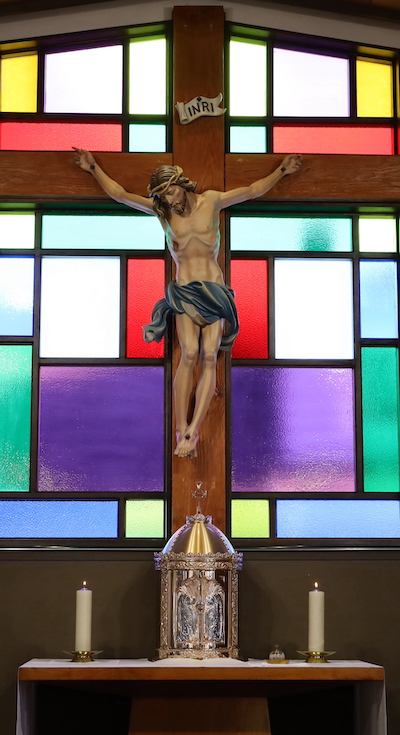 We believe in Jesus Christ.
We believe in Jesus Christ.
Jesus Christ is the Son of God, sent to mankind by the Father, so that we may all have everlasting life. We believe that Jesus walked here on earth, just like you and me. He was conceived by the Holy Spirit and was born of the Virgin Mary in a humble manger in Bethlehem. We believe in the Incarnation – that God was made man without ceasing to be God. Thus He is true God and true man. This man is Jesus Christ. Through Him we are called to be heirs of the Kingdom of Heaven. Jesus is the second person of the Holy Trinity: God the Father, God the Son, and God the Holy Spirit.
We have Good News.
God created the heavens and the earth, and all who live in it. As His sons and daughters, we were created to be in relationship with Him forever in paradise. However, through the fault of our first parents, Adam and Eve, sin entered and broke our relationship with God. This created a great divide between us, a barrier that we can never fix on our own. Because of this, God sent His only begotten Son, Jesus Christ, to reconcile us to Him. Jesus was condemned to suffer for our sake — leading to His death on the cross. His death bore our sin and shame and through this one act of love He fixed the broken relationship between us and the Father. We believe that Jesus died and went to the grave, and that in three days He rose again in glory. Through His death and resurrection, He conquered sin. His victory over death is our hope and our salvation. Through Christ we can rise again and through Him we are invited into the heavenly inheritance that awaits us. This is the Gospel or the Good News as we call it. However, it does not end there. The Good News is about hope and the invitation that follows it. It is an invitation to get to know the person of Jesus Christ, in whom we place our trust. It is an invitation to say yes to Him and to encounter the Church.
We belong to a very big family.
During His time on earth, Jesus moved the hearts of many followers. He especially transformed 12 Apostles that He called by name and gave them authority to take care of the Church that He started on Earth. Jesus promised His believers that when He returns to Heaven, He will send for us an advocate. On Pentecost, the Holy Spirit came down to the early Church giving courage to the apostles to become fearless and courageous witnesses to Christ. On this day, the Church was born. The Holy Spirit broke down ethnic and linguistic barriers and united the Church, making us into a universal family. We are called the Catholic Church because, in Greek, the term katholikos (καθολικός) means “universal”.
Over 2,000 years later, the Catholic Church is now a family of over 1.2 billion people around the world. We are made up of people from all walks of life, called to different vocations, but with a simple mission: to love God and to love others.
Mass Times
SUNDAYS:
Saturday: 4:30 pm
(anticipatory Mass)
Sunday: 8:30 am and 10:30 am
WEEKDAYS:
Monday to Saturday: 9:00 am
First Friday: 6:30 pm
Confession
Monday to Saturday: 8:30 am to 8:50 am
Saturday: 3:30 pm to 4:15 pm
Adoration Hours
ADORATION:
Friday: 9:30 am to 4:00 pm
First Friday:
9:30 am to 4:00 pm, 7:00pm – 8:00 am
Parish Holy Hour:
7:00 pm to 8:00 pm on First Friday
Sign-up sheets located in vestibule.
BENEDICTION:
Friday: 4:00 pm
Online Giving
Offertory gifts to St. Anthony's for Sundays and Second Collections.
Thank you for your support of St. Anthony’s Parish and the Catholic Community!
Flocknote
We are excited to announce that our parish has joined Flocknote!
Signup to receive regular parish news, messages, and bulletins via email or text.
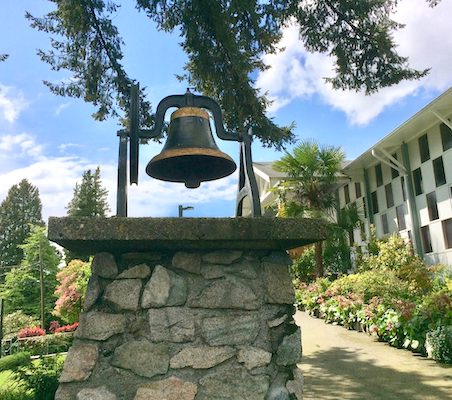
New to the Parish?
Please take a moment and register with St. Anthony's.
Our Team
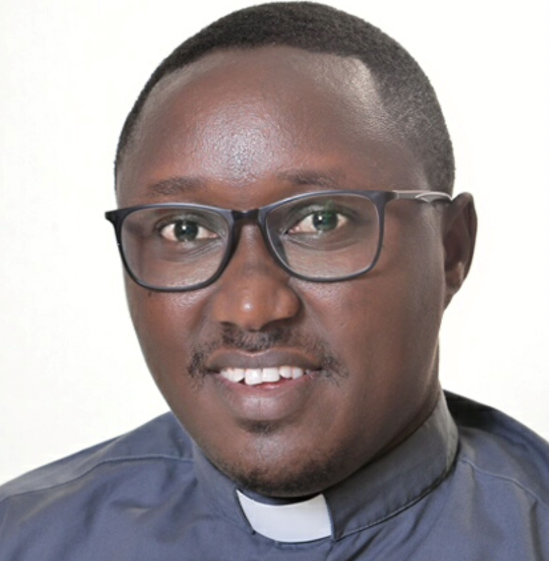
Fr. Arsène Dutunge
Pastor
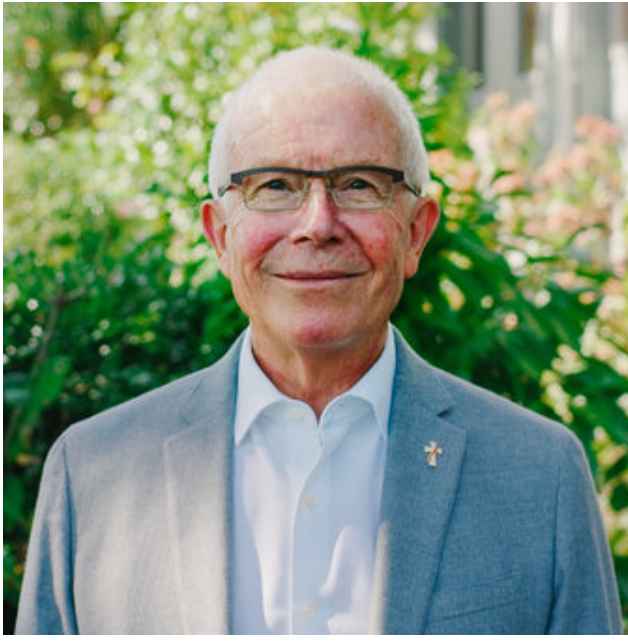
Deacon Tony Gray
IN RESIDENCE

PARISH ADMINISTRATION
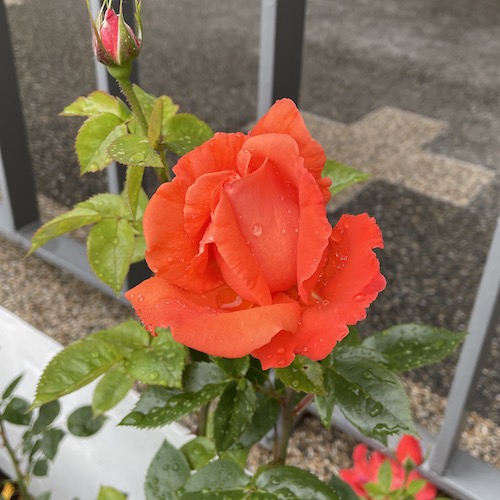
Anna K
Parish Administration

Elizabeth Bell
Bookkeeper
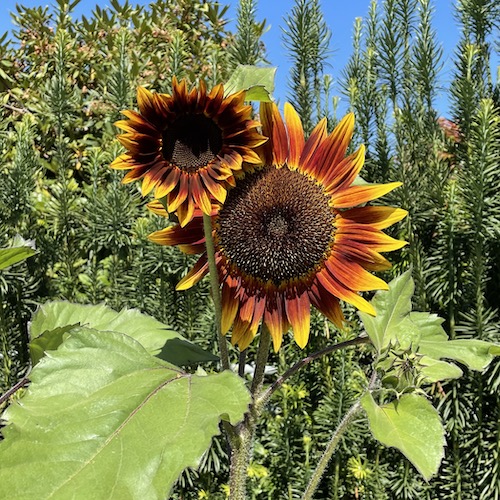
Winfred van der Sande
Leadership Team

Giovanni Bitelli
Leadership Team
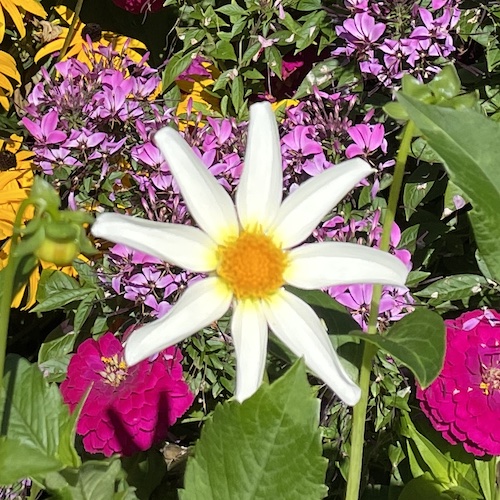
Christine Oberti
Leadership Team

Elisabeth Holman
Leadership Team
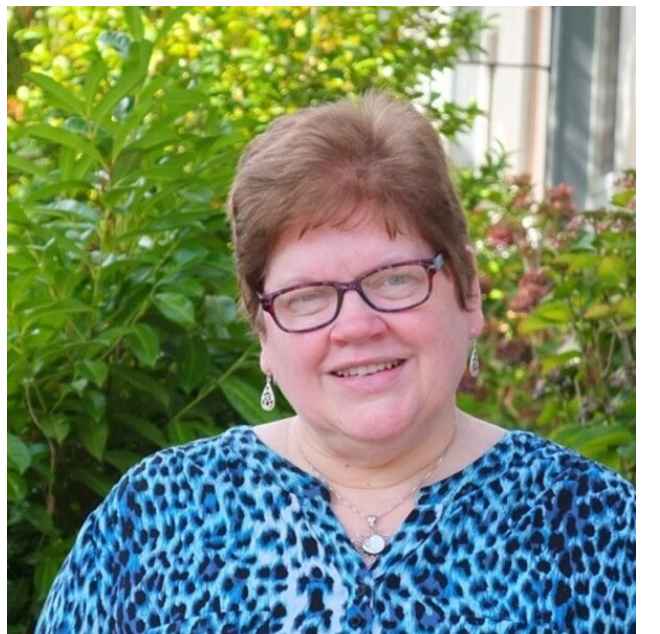
Susan Murphy
Leadership Team
From around the Archdiocese...
Articles from BC Catholic – a weekly publication serving the needs of the Catholic community in BC – the official newspaper of the Archdiocese of Vancouver. And Behold Vancouver – a place to ask questions, connect with others, and discover more of God – an initiative by the Archdiocese of Vancouver.

Every day is Thanksgiving, so Happy Thanksgiving
I don’t often have fast food but on a whim I recently popped into an A&W near my campus. Waiting

Archbishop Roussin offered first residential schools apology from Archdiocese of Vancouver: a century of Indigenous and Church relationship and reconciliation
A continuing series looking at progress made in healing and reconciliation initiatives between the Archdiocese of Vancouver and Canada’s Indigenous

Sacred encounter: deacon-surgeon sees his call to service more deeply after operating on priest
In the few short months since his ordination to the permanent diaconate on June 1, Deacon Tim Kostamo has done

‘Our civic participation, particularly on election day, is essential’: Archbishop Miller
Archbishop J. Michael Miller released the following letter in advance of the B.C. provincial election, Saturday, Oct. 19, 2024.October 10,

Religious order learns humanity from the mentally ill
People with mental health problems have much to teach, especially in humanity, a much-needed virtue in our individualistic world, say

Education, accompaniment, advocacy ‘crucial for mental health ministry’: World Mental Health Day
The education of priests and lay people, accompaniment in parishes for individuals with mental health challenges, and advocacy for institutional

Keep perfume out of churches along with balloons
Thank you for publishing the Sept. 2 article “Balloons over sacraments?” concerning safety for parishioners. The article raises an issue

Never tell the vinyl plank party ‘it’s impossible’
Sacred Heart Church in Lumby is set to celebrate its 100-year anniversary on Oct. 15, but in preparing for the

Archbishop Miller calls for ‘robust limitations’ on child access to explicit online material
Vancouver Archbishop J. Michael Miller has sent a letter to Members of Parliament within the Archdiocese of Vancouver, urging them

The healing power of genuine apology
An apology has great power to heal a wrong suffered. I witnessed an apology by a Catholic deacon (having no

‘Healing begins when we listen attentively to one another’
Archbishop J. Michael Miller released the following letter to mark National Truth and Reconciliation Day, Sept. 30, 2024. September 30,

Discomfort is a part of truth
Many, many years ago, I was asked to give a pro-life presentation to a large group of young adults. The

In the Waters of Lourdes
Have you ever had one of those experiences that was a big turning point in your life? In the moment, perhaps you didn’t know how it was going to affect your future, but you knew you’d be different as a result of it? Yeah, well that was me after I went on a nine-day pilgrimage to France this past Christmas. A pilgrimage is a journey made to some sacred place as an act of religious devotion, but traveling to different holy sites in France with four friends of mine was so much more than an act of religious devotion — it was a spiritual adventure. I left life behind, logged off all my social media accounts, put my phone in my backpack, and embraced where I was. Setting out on

How I Find God in Everyday Life
At Mass one Sunday morning, as I was kneeling after receiving Communion, I glanced up to see a man pushing his wife’s wheelchair over to the Eucharistic minister. I watched the husband patiently stand by his wife and coax her to open her mouth to receive the host. I found out later that the woman had early onset Alzheimer’s. The tragedy of this disease was eclipsed by the unconditional love I saw in this husband living out his marriage vows. It was an example of pure and beautiful love, a true display of a Godly marriage and faith lived out loud. During my spiritual journey, I have struggled to feel close to God during Mass, despite knowing He is physically present. I yearn for this closeness, and I feel jealous

What’s My Vocation?
“What should I do with my life?” It’s a question on many hearts, maybe even our own. In this video, Father Mike Schmitz gives some direction that can lead to an answer for ourselves or someone we know. He shares how a vocation is more than just figuring out whether we’re called to married life or religious life, and it’s about more than just finding out what we like to do. As he breaks down three different types of vocation we all have, he draws a practical path we can follow to pursue holiness.

Evaluating the Effects of Social On My Own Soul
We become like the things we spend the most time with.At the beginning of this year, I made a goal for myself to stop reading journalism with shallow or narrow perspectives. I didn’t like the way it was forming me to think and I wanted to be more proactive about the things I let into my mind. I canceled my news subscription and signed up for a print magazine. I don’t agree with everything this magazine publishes but I like the way it makes me think.I’ve had a habit for a little while now of checking their top stories each day and reading them. Over time, I’ve noticed that the more I read their articles, the more I start to embrace their way of thinking. Their view of the world,

For Grandparents
We are told to honor our mother and father…but what about our grandparents? Well they get a special shout-out today, in the readings, and in our lives. Preached on a mission at St. John the Baptist Church in Oklahoma City, Oklahoma on March 11, 2015. © 2024 Busted Halo®, All rights reserved.

5 Ways to Embrace Your Vocation as a Grandparent
I stepped through the door of the newborn intensive care unit (NICU) trembling. When I found my daughter’s son, Allen Joseph, I froze. It was the first time I had ever seen him. I’d never expected a moment like this, his premature, tiny body swaddled in a blanket and connected to machines all around him. As I placed my finger on his cheek, tears streamed down my face. Welcome to the world, Allen Joseph.That’s when it happened. My heart stretched and grew a whole new chamber. From the very first moment I saw him, I loved every single ounce of my first grandson. And I knew I would never be the same.Today we have four grandsons, and we have dreams for each one: Allen, Sam, Matthew, and Michael. Our deepest desire

Questions to Ask Elderly Loved Ones
Your grandparents, aunts and uncles, and older loved ones have a lifetime of wisdom to share. Why not carve out some time to sit down and ask them about it?We’ve put together this list of questions that you can print out and jot down their answers about their childhood, favourite things, and life lessons. And don’t feel like you need to stick to the handout — the questions can serve as conversation starters. Your loved ones will likely have more to share than we could even think up!Download the worksheet by clicking the link below:Download Worksheet©2024 Grotto Network

The Desires of Our Hearts
What does God mean by this promise? Years ago, when I first became a Christian, there was a young couple at our church who took me under their wing. I was grateful for their friendship, encouragement and efforts to answer my many questions. One day, the topic of unfulfilled hopes and dreams came up, to which the wife responded by quoting Psalm 37:4, “He will give you the desires of your heart.” The strong implication was that as a Christian, I could expect God to give me anything I wanted, if I would only ask. At this point, most of the Scriptures were still terra incognita to me. But I did recall a verse, 1 John 5:14 as it turned out, which qualified that promise by insisting we ask according

Overcoming Envy
On which sin are we reflecting today? Envy. A young married woman gave me permission to share how she’s struggling so much with not being able to have children yet. Every time a friend gets pregnant, or someone talks about the beauty of children, her heart sinks. Why can’t she have children of her own? Why won’t God the Father give her something good, that we’re made to have? When some friends try to console her by saying, “God’s calling you to be a spiritual mother,” that does nothing for her whatsoever. Her pain is real and normal. Let’s acknowledge the pain that many of us feel when we want something good and don’t receive it: wanting to get married, be healthy, have financial security. But then there’s the sin

Digital Minimalism: How to Live Better with Technology
One of the defining struggles of our generation is to balance the way technology occupies our attention and desire with our calling to live intentionally and boldly. Digital technology certainly enriches our lives, but we all know that restless, distracted feeling it can leave us with, too.Cal Newport’s most recent book, Digital Minimalism: Choosing a Focused Life in a Noisy World, offers a practical and convincing solution to those of us who feel enslaved by the dizzying swarm of our technological “conveniences.” Newport, a professor at Georgetown and a New York Times best-selling author, understands that what’s needed is not merely a list of helpful tips or theorized critiques regarding our relationship with digital technology, but an entirely new approach to living.Such an approach, according to Newport, is summed up by the

How Do We Avoid Tech Interfering With Our Humanity?
Throughout history, people have asked the question, what makes us human? Philosophers, scientists, and theologians have all tackled this question in different ways, and I won’t claim to have a new answer. But I have found that looking at humanity through the lens of technology — and the future we’re building towards with it — offers me new insights into the answer to that question. In its simplest form, a human is a person as distinguished from an animal or (in science fiction) an alien. However, being human is much more complicated than that. We are rational beings capable of understanding and making decisions, we have curiosity about the world around us and we have a wide variety of emotions that affect both of the former. In a spiritual

Why I’m Catholic: It’s a Force for Good
Maura’s StoryAround a dozen girls, sporting the reliable Catholic school plaid, sat in a classroom tucked away in a side hallway on the third floor of an all-girls high school. During the fall of 2006 and into 2007, the room was filled with raucous, back-and-forth conversations every time the class met. We talked about the genocide in Darfur, homelessness in our city of Boston, and the death penalty. Tough topics, but this was senior year theology at my high school: a yearlong class in social justice.We read the work of Catholics who dedicate their lives to social justice work, watched Frontline documentaries, and studied the seven themes of Catholic Social Teaching until they were basically second nature. When we weren’t in our classroom chairs, there was a community service requirement
